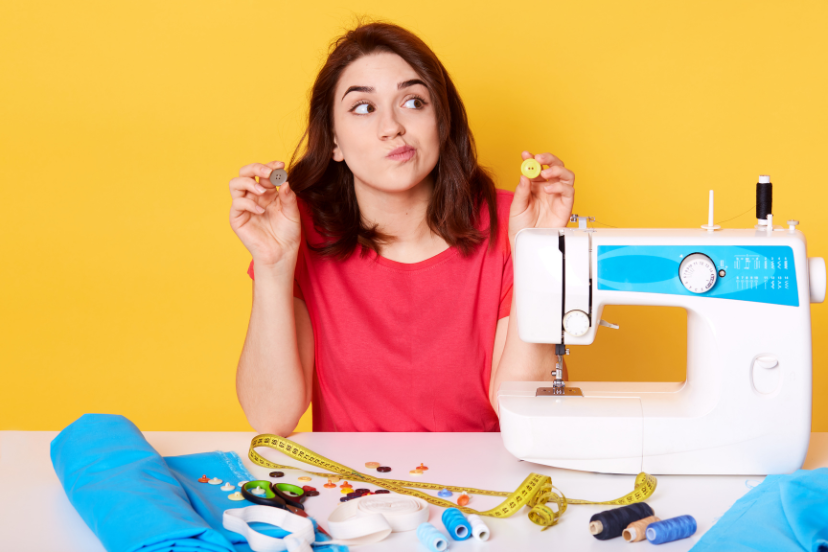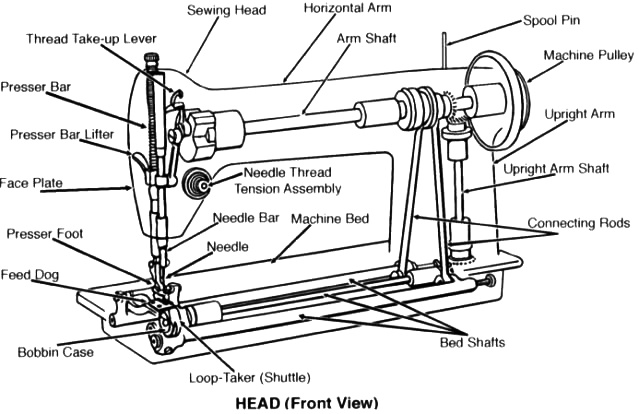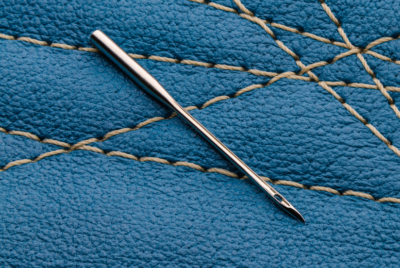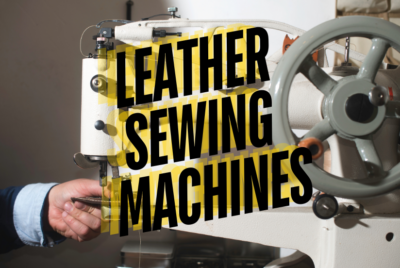How Sewing Machines Work
As a passionate enthusiast of vintage sewing machines, knowing how sewing machine work add to the fascination and curiosity surrounding the inner workings of these mechanical marvels.
Sewing machines have revolutionized the way we create clothing and other fabric-based projects, providing efficiency and precision that hand sewing alone cannot match.
I will take you on a journey through the intricate mechanisms and functions of sewing machines, shedding light on how they work and providing helpful suggestions along the way.
Sewing machines have played a pivotal role in the history of textile production and continue to be indispensable tools for sewing enthusiasts and professionals alike. These machines have come a long way since their inception, and today, they incorporate advanced features that enhance convenience and productivity.
At their core, sewing machines operate on fundamental principles that have stood the test of time.
Basic Components of a Sewing Machine
To understand how a sewing machine works, it’s essential to familiarize yourself with its basic components. Externally, there are four main components – main body, needle, bobbin, and feed dog. Each has its own function.
- Main body or frame
Provides stability and houses the motor, which powers the machine. - Needle
In along with the thread, plays a crucial role in forming stitches. - Bobbin
Holds the lower thread and works in tandem with the needle to create a lockstitch. - Feed dogs
Helps to move the fabric smoothly through the machine.
Mechanical Functioning of a Sewing Machine
At the heart of a sewing machine’s operation is the mechanical interplay between its components. Power transmission from the motor drives the needle up and down, thanks to a system of gears and belts.
As the needle penetrates the fabric, it creates a loop with the bobbin thread, resulting in the formation of stitches. This mechanical dance is orchestrated with precision to ensure smooth and accurate stitching.
Threading the Sewing Machine
Threading a sewing machine can be a daunting task for beginners, but with practice, it becomes second nature.
It involves winding the bobbin, inserting it into the bobbin case, and guiding the thread through various threading points, ultimately leading to the needle.
Following the machine’s manual and diagrams will simplify the threading process and ensure optimal stitch quality. Bobbins and threading can be confusing. Additional information can be found at our article, “Sewing Machine Bobbins Information Guide“.
Stitch Types and Settings
Sewing machines offer a variety of stitch types to accommodate different sewing projects.
The straight stitch is the most basic and commonly used, suitable for joining fabrics and creating seams. Zigzag stitches allow for decorative stitching and stretchable seams. Buttonhole stitches automate the process of creating buttonholes with precision.
Understanding the machine’s stitch settings and tension adjustment options empowers you to achieve the desired results.
Maintenance and Troubleshooting
A critical part of knowing how sewing machines work helps to understand the proper way to maintain your sewing machine. It is is crucial for helping preserve its longevity and secure its optimal performance.
Regular cleaning and oiling prevent dust and debris from affecting the machine’s moving parts. Changing needles frequently ensures clean and precise stitching.
Inevitably, you may encounter common issues like thread breakage or uneven stitches. Troubleshooting techniques such as rethreading, adjusting tension, or consulting the machine’s manual can resolve these problems.
Advanced Features and Accessories
Modern sewing machines come equipped with advanced features and accessories that enhance functionality and convenience. Knowing how your sewing machine works is valuable knowledge.
Speed control allows you to set the machine’s sewing speed according to your preference or the requirements of the project. Automatic thread cutters save time and effort by trimming the threads neatly. Presser feet provide different functionalities, from basic stitching to specialized techniques. Additionally, compatibility with various attachments expands the machine’s capabilities.
Choosing the Right Sewing Machine
When selecting a sewing machine, consider your skill level, intended usage, and budget.
For beginners, user-friendly machines with essential features are ideal for learning and honing your skills. Advanced users may require additional functions such as decorative stitches or computerized options.
Researching reputable brands and reading reviews can help you make an informed decision that aligns with your sewing needs. Our article “Sewing Machine Selection Criteria” provides valuable guidelines to consider when choosing the right sewing machine for yourself and overviews of the leading sewing machine manufacturers.
Sewing Tips and Techniques
To make the most of your sewing machine, understanding essential sewing tips and techniques is invaluable. Choosing the right fabric for your project ensures better results and ease of stitching. Seam finishes, such as serging or French seams, add durability and a professional touch to your garments. Mastering hemming techniques and exploring decorative embellishments open up endless possibilities for creative expression.
Final Sewing Machine Thoughts
Sewing machines are remarkable inventions that have transformed the world of sewing.
From their basic components to the complex mechanisms that bring them to life, these machines embody the perfect blend of engineering and artistry.
Whether you’re a beginner venturing into the world of sewing or an experienced sewist looking to upgrade your machine, understanding how sewing machines work empowers you to unleash your creativity and embark on exciting sewing projects.
FAQs
Can I use any type of thread with my sewing machine?
Most sewing machines can handle a wide range of threads, including cotton, polyester, and nylon. However, it’s always advisable to check your machine’s manual for any specific recommendations or limitations.
Why does my sewing machine needle keep breaking?
Needle breakage can occur due to various reasons, including using the wrong needle size for the fabric, improper needle insertion, or bent needles. Ensure you’re using the correct needle type and size for your project and replace the needle if it shows signs of damage.
How often should I clean and oil my sewing machine?
Regular cleaning and oiling depend on your machine’s usage. As a general guideline, it’s recommended to clean and oil your sewing machine after every major project or at least once every few months to keep it in optimal condition.
What is the purpose of different presser feet?
Presser feet serve different purposes, such as standard stitching, zippers, buttonholes, and quilting. Each foot is designed to provide specific functions and improve the accuracy and quality of your stitching.
Do sewing machines come with a warranty?
Most sewing machines come with a warranty. The duration and terms of the warranty may vary depending on the manufacturer and model. It’s advisable to check the warranty information before making a purchase.
RetroSewMachines.com is a participant in the Amazon Services LLC Associates Program. As an Amazon Associate, we earn from qualifying purchases. We also participates in other affiliate programs and may earn a referral commission if you purchase through links on this website. The information presented here is for general educational purposes only.






Comments are closed.